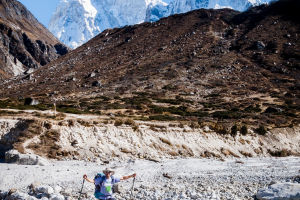Self-driving through unfamiliar regions can be an exhilarating experience—there's a sense of freedom, control, and adventure.
However, each country or state has its own traffic rules and safety considerations that you need to be aware of before hitting the road.
From basic driving etiquette to crucial safety techniques, here's a comprehensive guide to ensure your self-drive experience is smooth, safe, and stress-free.
1. Understand Local Traffic Laws
Every country or region has its own set of road rules, and failing to adhere to them can lead to hefty fines or worse. It's essential to familiarize yourself with the local traffic laws before embarking on your journey.
1.1. Speed Limits: Speed limits vary significantly depending on where you are. In some countries, speed limits on highways can go as high as 130 km/h (80 mph), while in others, you may encounter more restrictive limits in rural areas. Be sure to check the speed limit signs often and adjust your driving accordingly.
Pro Tip: Many countries have strict enforcement of speed limits using speed cameras. Set a reminder on your GPS, which often indicate where these cameras are located.
1.2. Road Signs and Signals: Road signs are often universal, but you might encounter some unique ones depending on the country. Take a moment to study the signs and what they mean in the region you're traveling to. For example, some countries use different colors or symbols to indicate hazards, and understanding these signs can prevent unexpected situations.
Pro Tip: Download a road sign guide app or review a country-specific guide to familiarize yourself with any unfamiliar signs.
2. Plan Your Route & Stay Informed
Getting lost or running out of fuel in a remote area can ruin an otherwise great trip. Plan ahead to minimize risks and maximize enjoyment.
2.1. Use Reliable Navigation Tools: GPS apps are great for route planning. They can help you avoid traffic, find fuel stations, and provide real-time updates on road conditions. However, don't rely solely on technology—keep a physical map as a backup in case you lose signal or face app malfunctions.
Pro Tip: If traveling in a region with poor connectivity, consider downloading maps or routes in advance for offline use.
2.2. Check the Weather and Road Conditions: Weather can drastically affect road conditions, especially if you're driving through mountainous or rural regions. Heavy rain, snow, or fog can make driving hazardous. Always check the weather forecast before setting out, and be aware of local road closures or detours due to construction or accidents.
Pro Tip: Some navigation apps provide live updates on road conditions and weather warnings from other drivers, which can be invaluable when navigating tricky terrains.
3. Prioritize Safety on the Road
Safety is paramount during any road trip. Whether you're driving on highways or through small towns, being aware of potential risks will help you stay safe.
3.1. Wear Seatbelts at All Times: It might sound obvious, but seatbelts are one of the simplest yet most effective safety measures. In many places, it's mandatory for both the driver and passengers to wear seatbelts, regardless of where you're sitting. Make it a habit to buckle up every time you get in the car.
Pro Tip: If you're traveling with children, ensure they're seated in the appropriate child safety seats for their age and weight. Research local regulations for car seats and booster seats, as they vary by country.
3.2. Drive Defensively: When driving in unfamiliar areas, it's crucial to anticipate potential hazards. Always stay alert, keep a safe distance from the vehicle ahead, and be prepared to react quickly to sudden changes, like erratic drivers or animals crossing the road.
Pro Tip: Avoid distractions, such as texting or fiddling with the radio, while driving. Stay focused on the road to avoid accidents.
4. Parking and Road Etiquette
Understanding local parking laws and etiquette can prevent unnecessary fines and stress during your travels.
4.1. Know Where You Can Park: Many cities have strict parking regulations, and you may encounter areas where parking is limited or prohibited. Pay attention to signs indicating parking rules, time limits, and fees. If parking garages are available, consider using them to avoid fines.
Pro Tip: In some tourist-heavy areas, it's common to find areas where local authorities enforce no-parking zones. Always double-check to avoid getting ticketed or towed.
4.2. Practice Courteous Driving: In many regions, honking the horn is reserved for emergencies, not for expressing frustration in traffic. Use turn signals at all times, give pedestrians the right of way, and always yield to traffic when appropriate.
Pro Tip: If you're driving in a country where traffic is more chaotic or aggressive than you're used to, take it slow, stay calm, and let other drivers go ahead when needed.
5. Understanding Road Hazards
Each type of terrain presents unique challenges when driving. Understanding the potential hazards will keep you safer on the road.
5.1. Rural Roads: When driving on rural roads or highways, you may encounter unexpected hazards, such as animals crossing, pedestrians, or cyclists. Be extra vigilant, particularly at dusk or dawn when visibility is poor.
Pro Tip: Slow down on unfamiliar rural roads, especially in areas where wildlife is common. Use high beams to improve your visibility at night, but always dim them when approaching other vehicles.
5.2. Mountain and Coastal Roads: If your route takes you through mountainous or coastal regions, expect steep inclines and sharp curves. Make sure your car is in good working condition, especially the brakes, and avoid speeding.
Pro Tip: Be aware of weather changes in mountainous areas. Roads can quickly become slick, and fog can reduce visibility dramatically. Always check for weather updates.
Conclusion: Drive Smart and Enjoy the Journey
A successful road trip relies not only on the scenic views and new experiences but also on your ability to follow local driving rules and prioritize safety. By understanding traffic laws, preparing for the unexpected, and practicing courteous and defensive driving, you'll ensure that your journey is both enjoyable and safe.
Whether you're exploring remote backroads or navigating busy city streets, confidence on the road begins with preparation. So, buckle up, plan your route, and embrace the freedom of the open road with the assurance that you're ready for anything.


